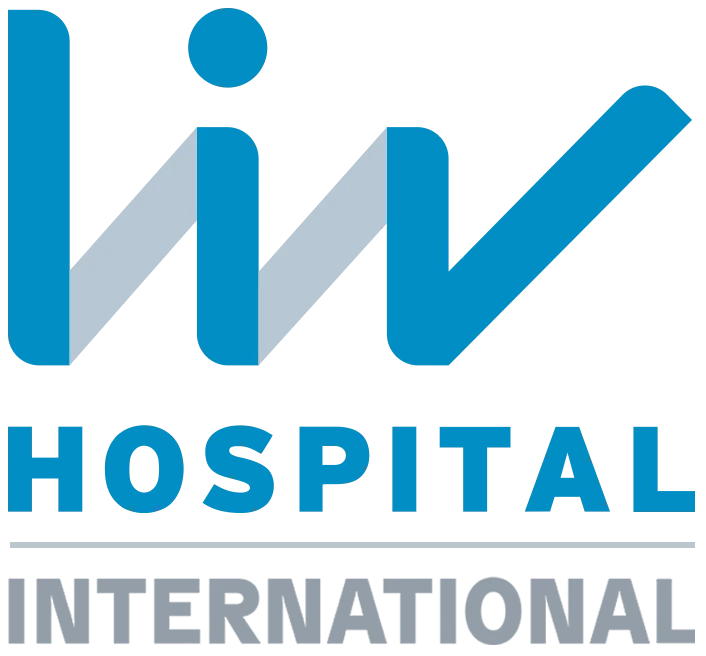Oncologists are key in finding the right treatment for cancer patients. They look at many things. This includes the cancer type and stage, the patient’s health, and what the patient wants. Patients often wonder, “How do oncologists decide treatment? since the decision-making process can seem complex and very personal.
There are many ways to treat cancer. Oncologists must weigh these options carefully. They need to keep up with new research and treatments to give the best care.
Key Takeaways
- Oncologists consider multiple factors when deciding on a course of treatment.
- The type and stage of cancer are key in picking the best treatment.
- The patient’s health and what they want also matter a lot in cancer care.
- Oncologists must keep up with new medical findings and treatments.
- Personalized care is very important in cancer treatment decisions.
The Initial Cancer Diagnosis and Assessment

Understanding cancer starts with a detailed diagnosis and assessment. This important step uses various tests and procedures. They help figure out the cancer type and how far it has spread.
Diagnostic Tests and Procedures
Diagnostic tests are key to finding out if you have cancer. They include CT scans and MRI to see where the tumor is and how big it is. Biopsies also play a big role, giving tissue samples for lab tests.
Staging and Grading of Cancer
Staging and grading are important for knowing how serious the cancer is. Staging shows how far the cancer has spread. Grading looks at how aggressive the cancer cells are.
| Cancer Stage | Description |
| Stage I | Cancer is localized and has not spread. |
| Stage II | Cancer has grown but is not too far. |
| Stage III | Cancer has spread to nearby tissues or lymph nodes. |
| Stage IV | Cancer has spread to distant parts of the body. |
Pathology Reports and Their Significance
Pathology reports are very important in cancer diagnosis. They give detailed info about the tumor, like its type, grade, and genetic features. These reports help doctors make a treatment plan just for you.
Key Factors Influencing Treatment Decisions
Several important considerations guide oncologists in determining the best treatment approach. Understanding these factors is key to creating a treatment plan that meets the individual patient’s needs.
Cancer Type and Location
The type and location of cancer are key in choosing the right treatment. Different cancers react differently to treatments. The location also affects which treatments are possible.
Stage and Grade of Cancer
The stage and grade of cancer tell us a lot about the disease. They show how far the cancer has spread and how aggressive it is. This helps doctors decide on the right treatment intensity and type.
Patient’s Overall Health Status
A patient’s overall health is very important in treatment decisions. Some health conditions make certain treatments not suitable. The patient’s health also affects how well they can handle treatment side effects.
Genetic and Molecular Profiling
Genetic and molecular profiling of the cancer gives valuable insights. It helps create personalized treatment plans. This profiling can reveal specific genetic mutations or molecular markers that certain therapies target.
| Factor | Influence on Treatment |
| Cancer Type and Location | Determines the most appropriate treatment based on the cancer’s characteristics and location. |
| Stage and Grade of Cancer | Guides the intensity and type of treatment required based on the disease’s extent and aggressiveness. |
| Patient’s Overall Health Status | Affects the suitability of certain treatments and the patient’s ability to tolerate side effects. |
| Genetic and Molecular Profiling | Enables personalized treatment plans by identifying targetable genetic mutations or molecular markers. |
Evaluating Cancer Treatment Options for Patients
Choosing the best cancer treatment involves looking at several factors. These include the cancer’s type and stage. Doctors use different treatments to find the best one for each patient.
Surgery as a Treatment Option
Surgery is often the first choice for cancers that haven’t spread far. It aims to remove the tumor and nearby tissue. The decision to have surgery depends on the cancer’s location, size, and the patient’s health. Surgical advancements have improved outcomes for many cancer patients.
Chemotherapy Protocols
Chemotherapy is used for cancers that have spread or are at high risk of coming back. There are many chemotherapy options, and the right one depends on the cancer type, stage, and patient’s health. Chemotherapy can be given alone or with other treatments.
Immunotherapy and Targeted Therapies
Immunotherapy and targeted therapies are new ways to fight cancer. They help the body fight cancer or target specific cancer growth. Immunotherapy has shown great promise in treating various cancers, like melanoma and lung cancer.
Hormone Therapy
Hormone therapy is for cancers that grow because of hormones, like breast and prostate cancer. It blocks or lowers hormone production that helps cancer grow. Hormone therapy can be effective in managing hormone receptor-positive cancers.
In conclusion, finding the right cancer treatment needs a detailed look at the cancer and the patient’s health. By exploring different treatments, doctors can create a plan that meets each patient’s needs.
The Multidisciplinary Tumor Board Approach
The multidisciplinary tumor board approach is a team effort. It brings together many healthcare professionals to find the best treatment for cancer patients.
Experts from fields like medical oncology, surgical oncology, and radiation oncology meet. They also include pathologists and others. Together, they discuss patient cases and create a detailed treatment plan.
Composition of Tumor Boards
Tumor boards have a diverse team. The main members are:
- Medical Oncologists
- Surgical Oncologists
- Radiation Oncologists
- Pathologists
- Radiologists
Nurses and social workers may also join. They help with a complete care approach.
| Specialty | Role in Tumor Board |
| Medical Oncology | Provides expertise on systemic treatments, including chemotherapy and immunotherapy. |
| Surgical Oncology | Contributes knowledge on surgical options and techniques. |
| Radiation Oncology | Offers insights into radiation therapy planning and delivery. |
Collaborative Decision-Making Process
The decision-making in tumor boards is a team effort. They review patient data and discuss treatment options. This ensures the best plan is chosen, based on the latest research.
Through teamwork, tumor boards can make treatment plans better. They make sure plans are complete, coordinated, and fit each patient’s needs.
Evidence-Based Medicine in Oncology
Evidence-based medicine is key in oncology. It helps doctors make smart treatment choices. This method makes sure cancer treatments are based on the latest and most trusted research.
Clinical Practice Guidelines
Clinical practice guidelines are vital in oncology. They are made from reviews of research and meta-analyses. These guidelines help manage different cancers. For example, they might suggest certain chemotherapy or radiation treatments based on the cancer type and stage.
Key elements of clinical practice guidelines include:
- Systematic review of literature
- Grading of evidence quality
- Recommendations for treatment approaches
Research Studies and Meta-Analyses
Research studies and meta-analyses are essential for improving cancer treatment. They help create clinical practice guidelines. Randomized controlled trials (RCTs) are top-notch in research. They show how well treatments work and if they are safe.
| Study Type | Description | Example |
| Randomized Controlled Trials (RCTs) | Compares the outcomes of different treatments | Comparing the efficacy of two chemotherapy drugs |
| Meta-Analyses | Statistical analysis combining results from multiple studies | Analyzing overall survival rates across several cancer treatment studies |
Applying Evidence to Individual Cases
Using evidence-based medicine for each patient means combining doctor’s skills with research. Oncologists look at the patient’s health, wishes, and cancer details when deciding treatment. This approach helps tailor treatments for the best results.
Oncologists mix their expertise with research and guidelines. This way, they create personalized plans. These plans aim to give patients the best care possible.
Personalized Medicine and Precision Oncology
Genetic testing and molecular profiling are changing cancer treatment. They help doctors tailor treatments to each patient’s unique genetic and molecular profiles.
Genetic Testing and Biomarkers
Genetic testing is key in personalized medicine. It finds specific genetic mutations or biomarkers linked to a patient’s cancer. These biomarkers help decide the best treatment and predict how well it will work.
For example, BRCA1 and BRCA2 are important for breast and ovarian cancer. HER2 is key for breast cancer.
Genetic testing and biomarkers lead to more accurate diagnoses and treatment plans. For instance, tumors with too much HER2 protein might respond well to trastuzumab.
Targeted Therapies Based on Molecular Profiles
Targeted therapies aim at cancer cells based on their molecular traits. By knowing the genetic mutations behind a cancer, doctors can pick the most effective treatments. For example, EGFR inhibitors work well for non-small cell lung cancer with an EGFR mutation.
Table: Examples of Targeted Therapies
| Cancer Type | Targeted Therapy | Biomarker |
| Breast Cancer | Trastuzumab | HER2 |
| Non-Small Cell Lung Cancer | Erlotinib | EGFR |
| Colorectal Cancer | Cetuximab | KRAS wild-type |
Predictive and Prognostic Factors
Predictive and prognostic factors guide treatment choices. Predictive factors show who will likely benefit from a treatment. Prognostic factors predict the disease’s outcome.
In colon cancer, a KRAS mutation means some treatments won’t work. But, not having this mutation suggests a better outcome with the right treatment.
Personalized medicine and precision oncology are big steps forward in cancer treatment. They help tailor treatments to each patient’s cancer, leading to better results and fewer side effects.
Patient-Specific Considerations in Treatment Planning
Patient-specific considerations are key in creating effective cancer treatment plans. Oncologists must consider many factors to tailor treatments to each patient’s needs.
Age and Comorbidities
A patient’s age and comorbidities greatly affect treatment plans. Older patients or those with health issues may need special care. This helps avoid side effects and improves outcomes.
For example, some chemotherapy might be too strong for older or heart patients. Oncologists might choose gentler treatments or adjust doses. They aim to find the right balance for each patient.
Patient Preferences and Values
Patient preferences and values are also vital. Oncologists work with patients to choose treatments that fit their goals and values. This approach respects the patient’s wishes and ensures care is personal.
By focusing on these factors, oncologists can offer care that meets each patient’s unique needs. This makes treatment plans both effective and respectful of the patient’s autonomy.
The Treatment Planning Process
The treatment planning process is key in cancer care. It involves several important steps. Oncologists create a plan that fits the patient’s needs. They consider the cancer type, stage, and the patient’s health.
Developing the Initial Treatment Strategy
The first step is to decide on the treatment plan. This depends on the diagnosis, cancer stage, and the patient’s health. The goal is to find the best treatment that works well without too many side effects.
Sequencing Multiple Treatment Modalities
Many times, one treatment isn’t enough. A mix of therapies is needed. It’s important to order these treatments right to get the best results. For example, chemotherapy might come before surgery to make tumors smaller. Then, more chemotherapy is used after surgery to get rid of any cancer cells left.
Setting Treatment Goals: Curative vs. Palliative
Setting treatment goals is a big part of planning. Doctors decide if the goal is to cure the cancer or to make the patient more comfortable. Knowing these goals helps shape the treatment plan. It also helps patients understand what to expect.
Clinical Trials and Experimental Treatments
Clinical trials are key in cancer research. They let patients join in on new medical studies. This way, they can try treatments that aren’t available yet, which might help them more.
When Clinical Trials Are Considered
Oncologists think about clinical trials for certain patients. These patients must fit specific eligibility criteria. This includes the cancer type and stage, past treatments, and overall health.
Trials are often suggested when usual treatments don’t work. Or when a patient has a rare or aggressive cancer.
Types of Clinical Trials Available
There are many kinds of clinical trials. Some look at new treatments, treatment combinations, and treatment strategies. Others aim to make current treatments better. And some explore completely new ways to fight cancer.
- Trial phases (Phase I, II, III) to test safety and efficacy
- Investigator-initiated trials driven by researcher hypotheses
- Industry-sponsored trials focused on new drug development
Eligibility Criteria and Selection Process
The eligibility criteria for clinical trials are set carefully. They make sure participants can likely benefit from the trial treatment. And that the trial’s results will be useful.
These criteria might include cancer type, stage, genetic mutations, and past treatments. The selection process checks the patient’s medical history and current health.
Understanding clinical trials helps patients and oncologists make better choices. They can decide if trying these new treatments is right for them.
Shared Decision-Making Between Oncologists and Patients
Shared decision-making is key in cancer care. It brings together oncologists and patients. This teamwork makes sure treatment plans fit each patient’s needs and wishes.
Communicating Treatment Options and Risks
Good communication is vital in shared decision-making. Oncologists need to explain the treatment options clearly. They should talk about the good and bad sides of each choice.
Clear communication means discussing treatment side effects, success chances, and other options. Oncologists use plain language so patients understand their diagnosis and treatment choices.
Involving Family Members and Caregivers
Getting family and caregivers involved helps patients a lot. They offer emotional support and help remember important details. They also help make decisions when needed.
Oncologists often suggest bringing family or caregivers to appointments. This helps everyone understand the treatment plan better. It also lets them ask questions and share concerns.
The Importance of Second Opinions
Getting a second opinion is key in cancer care. It gives patients more insights and guidance. Doctors often suggest a second opinion for complex or unsure cases. This helps patients make better decisions about their treatment.
When to Seek a Second Opinion
There are many reasons to get a second opinion. For example, if you have a rare or aggressive cancer. Or if you’re unsure about your treatment plan.
- Uncertain or complex diagnosis
- Rare or aggressive cancer type
- Unclear treatment plan
How Second Opinions Influence Treatment Decisions
A second opinion can change your treatment plan. It might confirm or change the first plan. This can lead to a better treatment strategy, improving your health.
| Impact of Second Opinion | Percentage of Cases |
| Confirms Initial Treatment Plan | 40% |
| Alters Initial Treatment Plan | 30% |
| Provides Additional Insights | 30% |
Navigating Differences in Recommended Approaches
If you see different treatment plans, talk to your doctor. Openly discussing these differences helps you understand each option. This way, you can make a well-informed decision about your care.
By getting a second opinion, you learn more about your treatment options. This leads to better health outcomes for you.
Monitoring Treatment Response and Adjusting Plans
Keeping an eye on how well treatment is working is key in cancer care. It lets doctors tweak treatment plans as they go. This means using follow-up testing and imaging, handling side effects, and changing plans based on how the patient is doing.
Follow-up Testing and Imaging
Regular tests and scans are vital to see if treatment is working. Doctors might use CT scans, MRI scans, PET scans, and blood tests to check on tumors and the patient’s health. This way, they can spot problems early and tweak the treatment plan.
Managing Treatment Side Effects
It’s important to manage side effects well to keep patients’ quality of life up. Doctors might use medications, lifestyle changes, and alternative therapies to help. One patient said, “Handling side effects was a game-changer for me; it let me keep going with treatment without feeling too bad.”
“The key to successful cancer treatment is not just about treating the cancer, but also about treating the patient as a whole.”
When and Why Treatment Plans Change
Doctors change treatment plans based on how well they’re working. They might switch to a different treatment, adjust dosages, or add new therapies to the plan. By watching how treatment is going and making changes, doctors can help patients get better and live better lives.
Special Considerations for Different Cancer Types
It’s important to know the details of each cancer type for effective treatment plans. Each cancer has its own challenges. Oncologists must consider these when choosing the best treatment.
Solid Tumors vs. Hematologic Malignancies
Solid tumors and hematologic malignancies need different treatments. Solid tumors, like breast and lung cancer, often require surgery. Hematologic malignancies, such as leukemia, are usually treated with chemotherapy and targeted therapy.
Pediatric vs. Adult Cancer Treatment Approaches
Pediatric cancers are different from adult cancers in many ways. Children with cancer need special care. Their treatments aim to avoid long-term side effects and increase cure rates. Adult cancer treatment considers the patient’s overall health and any other health issues.
Rare Cancers and Treatment Challenges
Rare cancers are those affecting fewer than 6 people per 100,000 each year. They pose unique challenges due to limited data and no standard treatments. Rare cancer treatment often involves a team of specialists working together to create a personalized plan.
| Cancer Type | Common Treatment Approaches | Unique Challenges |
| Solid Tumors | Surgery, Radiation Therapy, Chemotherapy | Tumor location, size, and stage |
| Hematologic Malignancies | Chemotherapy, Targeted Therapy, Immunotherapy | Systemic disease, risk of relapse |
| Pediatric Cancers | Specialized chemotherapy protocols, Surgery, Radiation Therapy | Minimizing long-term side effects, maximizing cure rates |
| Rare Cancers | Personalized treatment plans, Multidisciplinary approach | Limited data, lack of standard guidelines |
In conclusion, each cancer type needs a specific treatment plan. This plan must consider the cancer’s unique features and the patient’s needs. By understanding these differences, doctors can create treatments that help patients more effectively.
Advanced and Recurrent Cancer Treatment Decisions
Managing advanced and recurrent cancer is complex. It’s about finding treatments that work well and don’t harm quality of life. Advanced cancer has spread to other parts of the body. Recurrent cancer comes back after treatment. Both are tough for doctors and patients.
Second-Line and Beyond Treatment Options
When first treatments fail or cancer comes back, doctors look at other options. These might include new chemotherapy, targeted therapies, or immunotherapies. The right choice depends on the cancer type, past treatments, and what the patient wants.
Table 1: Examples of Second-Line Treatment Options for Advanced Cancer
| Cancer Type | First-Line Treatment | Second-Line Treatment Options |
| Breast Cancer | Chemotherapy + Hormone Therapy | Targeted Therapy, Alternative Chemotherapy |
| Lung Cancer | Targeted Therapy + Chemotherapy | Immunotherapy, Chemotherapy |
| Colorectal Cancer | Chemotherapy + Targeted Therapy | Alternative Chemotherapy, Immunotherapy |
Managing Metastatic Disease
Dealing with metastatic disease is key in advanced cancer care. Goals include controlling symptoms, slowing disease growth, and improving life quality. Doctors use palliative care to help achieve these goals.
Balancing Efficacy and Quality of Life
When deciding on treatments for advanced and recurrent cancer, it’s important to balance benefits and side effects. Doctors must think about what’s best for the patient’s life and health. This means looking at what the patient values and their overall health.
In summary, treating advanced and recurrent cancer requires a careful and detailed approach. By exploring second-line treatments, managing metastatic disease, and focusing on quality of life, doctors can improve patient care and outcomes.
Conclusion: The Evolving Landscape of Cancer Treatment Decision-Making
The way we decide on cancer treatments is changing fast. This is thanks to new research and technology. Our understanding of cancer is growing, leading to better treatments for patients and their families.
Choosing the right cancer treatment is complex. It depends on many things like the cancer type, its stage, the patient’s health, and genetic tests. Doctors need to keep up with new findings to give the best care. Personalized medicine and precision oncology are making treatments more effective.
Healthcare workers must always learn about the latest in cancer research and technology. This helps them create treatment plans that fit each patient’s needs. The future of cancer treatment looks bright, promising better results and a better life for patients.
FAQ
How do oncologists decide on the best treatment plan for cancer patients?
Oncologists look at many things. They consider the cancer type and stage, the patient’s health, and what the patient wants. This helps them choose the best treatment.
What is the role of diagnostic tests in cancer diagnosis?
Tests like imaging and biopsies find where and how big the tumor is. They also get tissue for tests. This is key to diagnosing cancer and figuring out its grade.
How do oncologists evaluate treatment options for cancer patients?
Oncologists check out different treatments like surgery, chemo, and immunotherapy. They look at the cancer type and stage, the patient’s health, and genetic tests. This helps them pick the best option.
What is the multidisciplinary tumor board approach?
This approach brings together doctors from different fields. They talk about the best treatment for patients. This team includes medical oncology, surgical oncology, and more.
How do oncologists stay up-to-date with the latest treatment options and research?
Oncologists use the latest research and guidelines. They stay informed to make the best treatment choices for patients.
What is personalized medicine in cancer treatment?
Personalized medicine tailors treatment to each patient. It uses genetic tests and biomarkers to understand the cancer’s unique traits.
How do oncologists consider patient-specific factors in treatment planning?
Oncologists think about things like age and health when planning treatment. They also consider what the patient wants. This ensures care is focused on the patient.
What is the role of clinical trials in cancer treatment?
Clinical trials offer new treatments and help improve cancer care. Oncologists suggest them for patients who might benefit.
How do oncologists communicate treatment options and risks to patients?
Oncologists explain treatment choices and risks clearly. They involve patients and their families in decisions. This ensures patients are well-informed.
When is a second opinion recommended in cancer care?
A second opinion is suggested for complex or unsure cases. It offers more insights and helps patients make informed choices.
How are treatment plans adjusted based on patient response?
Plans are changed if needed. This is to improve outcomes, manage side effects, and keep quality of life high.
What are the treatment challenges for rare cancers?
Rare cancers need special approaches. Oncologists work hard to find effective treatments for these patients.
How are advanced and recurrent cancer treatment decisions made?
Decisions for advanced and recurrent cancer consider many factors. This includes treatment options, patient wishes, and quality of life. The goal is to manage disease and improve life.
What is the current landscape of cancer treatment decision-making?
Cancer treatment decisions are changing fast. New research and technology are driving these changes. Oncologists keep up with these advances to offer the best care.






